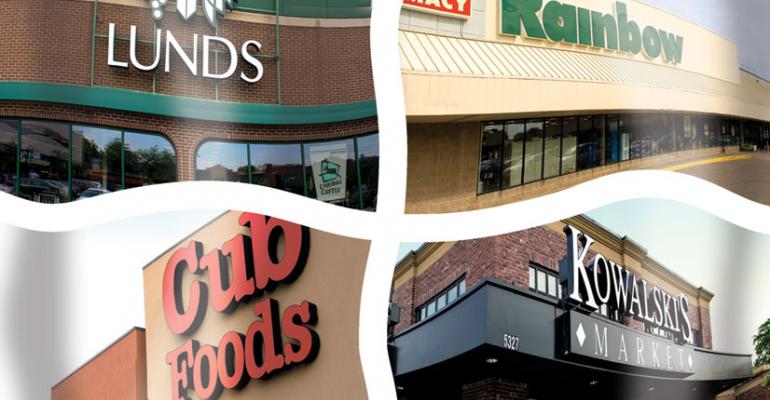Minneapolis is a throwback — a fragmented grocery marketplace with several local and regional supermarket operators but none of the industry’s largest conventional players to force market consolidation.
Nor are there any signs market consolidation is imminent.
“Minneapolis is one of the more competitive markets in the U.S., and it’s competitive at every price level,” one market observer told SN.
It has a wide variety of major operators — including Target, which is based there, plus Wal-Mart, Sam’s Club, Costco, Whole Foods and Trader Joe’s — all operating alternative formats, but it does not have a Kroger or Safeway.
“Minneapolis has always been a highly unusual market in the sense that it’s had strong independents and, for whatever reason, no strong supermarket chains,” Neil Stern, senior partner at McMillanDoolittle, Chicago, told SN.
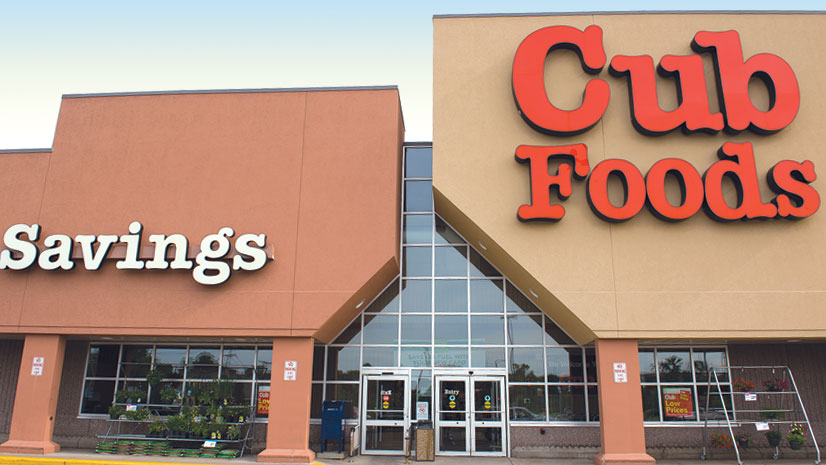
“It’s a market where Cub Foods and Rainbow Foods have dominated for years at the conventional end of the spectrum while home-grown independents like Lunds/Byerly’s and Kowalski’s have operated at the high end.”
According to another market observer, “There’s certainly a lot going on there — everything from Aldi, operating right in Save-A-Lot’s backyard, to conventional chains like Cub and Rainbow to upscale operators like Lunds and Kowalski’s, plus a couple of online options from Coborn’s Delivers and Lunds. And it’s Target’s home turf, which makes Target a bigger factor there than in many other places.
“In most other markets, the arrival of Wal-Mart has led to a lot of rationalization by local and regional chains, but in Minneapolis there is no national chain to spearhead a rationalization.
“That could change eventually, though, because with Supervalu owning Cub and Roundy’s owning Rainbow, there could be an ownership change someday that brings a Safeway or a Kroger into the market. But given all that’s happening in the industry, any change in the current situation is not imminent.”
Another market watcher offered a similar scenario. For a national chain to gain a foothold there, he told SN, “it would require critical mass, and since it’s unlikely Cub, which is owned and franchised by Supervalu, would sell out in Supervalu’s home market, that leaves only a potential exit by Roundy’s, which owns Rainbow, to make an entry by a national chain likely.”
Though both Supervalu and Nash Finch are headquartered in Minneapolis, one local anomaly is that Supervalu supplies most of the market’s larger operators, while Nash Finch supplies only some smaller independents.
“Nash Finch has taken a run at some of Supervalu’s larger customers over the years, but it’s been unsuccessful,” one market observer said.
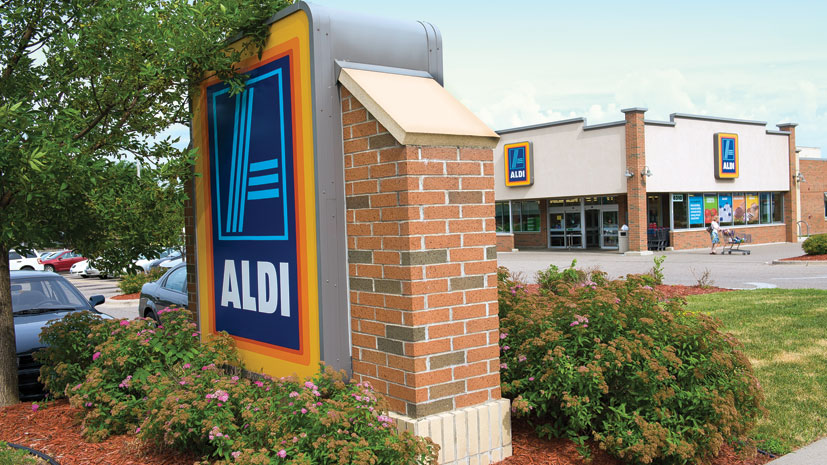
Given Supervalu’s dominance as the area’s major supplier, another anomaly is the absence of Save-A-Lot stores in the market, particularly given the strength Aldi is showing there.
Aldi was initially reluctant to enter the market, John Dean, principal at John Dean & Associates, Minneapolis, told SN.
“Minneapolis had always been a union stronghold, but when Target was able to breach that barrier by opening food departments that were not unionized, Wal-Mart and then Aldi decided it could come into the market.
“Once Aldi was there, it left little room for Save-A-Lot.”
Increasingly Competitive
Minneapolis-St. Paul — Minnesota’s “Twin Cities” — is the nation’s 14th largest metropolitan area, with a population of 3.8 million.
Aaron Sorenson, a spokesman for Lund Food Holdings, said Minneapolis is a city where retail growth has outdistanced population growth over the last decade.
“There’s been an increase in grocery square footage of more than 50% in the Twin Cities during that time, with many new retailers entering the market, which far outpaces a population growth of less than 10% during that same timeframe,” making Minneapolis “an increasingly competitive market for grocery retailers,” he said.
Chuck Lynch, vice president, merchandising and sales, Cub Foods, said the market is “constantly changing.”
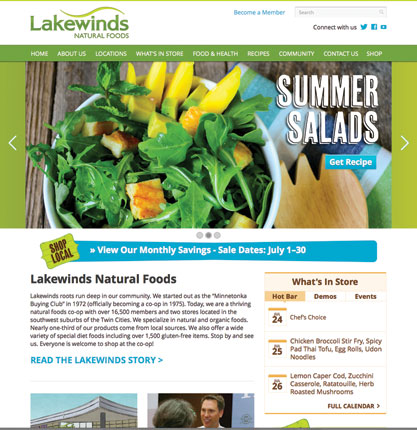
“Along with overall growth in both customer numbers and the number of retailers selling food, we are seeing very strong growth among several ethnic groups, particularly Asian and African immigrants.”
Several industry observers said Twin Cities consumers have a passion for natural and organic foods, which has led to the creation of several co-ops.
“Minneapolis has a diversified economy with a large above-average education level — traits more inclined toward quality and service,” an industry source noted. “That demand has led to an expanding up-trend store network as well as a significant natural foods network, which is currently in an expansion mode with the arrival of Whole Foods and Trader Joe’s, as well as a wave of well-established co-ops.”
The city supports three major co-ops:
• Lakewinds Natural Foods, which started in a volunteer’s basement in 1972 and has grown to three stores of approximately 15,000 square feet each, with a fourth store scheduled to open shortly.
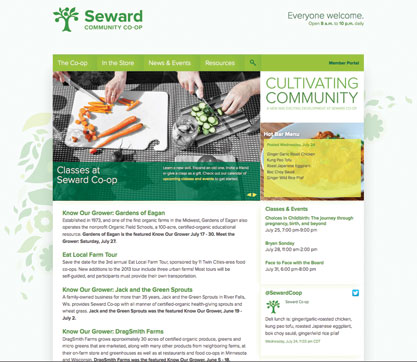
• Seward Community Co-op, also founded in 1972, which includes 10,000 members and operates a single store with annual sales of $28 million. Local sources said it is seeking a second location.
• The Wedge Community Co-op, a single-store operation started in 1974 that has grown to include its own bakery, organic produce farm and a distribution center that services other stores in the Upper Midwest. The Wedge, which one source said has concentrated on growing its other businesses, is reportedly planning to open a second retail location.
According to the industry source, “These co-ops don’t operate fancy stores, but they have very loyal followings, and they exist because shoppers demand it. They were the inspiration for Whole Foods to come into the market, and they are also the reason so many other retailers have expanded their offerings in the category.”
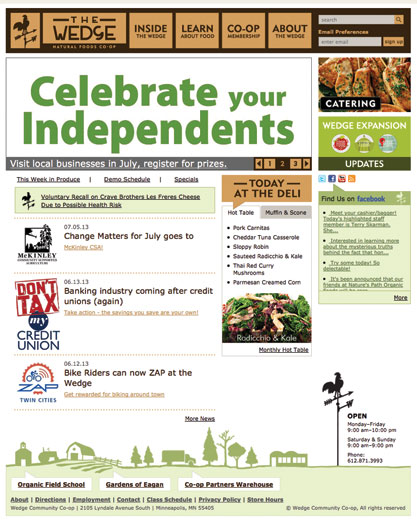
Nevertheless, Whole Foods was slow to embrace the Twin Cities, observers said, opening its first store in 1995 and a second in 1999, then waiting till 2011 to open a third location. It opened one new store earlier this year and another earlier this month, with an urban store scheduled to open in the fall.
A spokesman for Whole Foods told the Minneapolis Tribune the chain preferred to concentrate on growth in other urban areas, including Chicago, noting that Minneapolis is “more complex” than some other cities, “though education from a consumer’s perspective is just outstanding [there].”
According to Sorenson, of Lunds, “There appears to be a societal awakening right now taking place around real food. In our company we’ve seen double-digit sales growth in recent years in our organic and natural category, and we continue to increase the number of organic, natural and local products we offer.”
Rather than segregating natural and organic foods within the stores, Lunds and Byerly’s merchandise them adjacent to the mainstream brands but highlight the section with point-of-purchase materials that set it apart, “which has been a very effective merchandising tool,” one market observer pointed out.
Seeking Quality
One observer said that consumers who had gravitated to price competitors in the economic downturn have begun seeking more quality-focused supermarket options, including Trader Joe’s and Whole Foods.
“Even Lunds/Byerly’s and Kowalski’s, two of the area’s high-quality operators, have been impacted by the new wave of up-trend supermarkets such as Whole Foods and Trader Joe’s, and they could be further affected by the new natural cooperatives that will be opening, while the increases at Aldi are due to the new stores it opened and also to stores that are still within the cycle of maturing.”
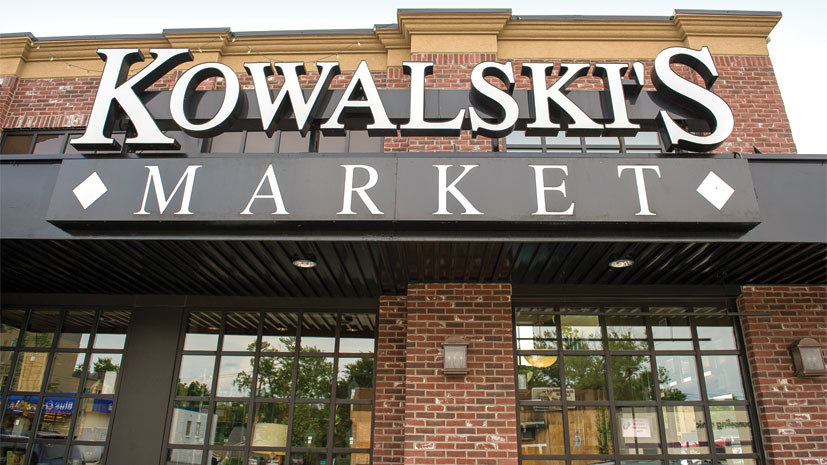
Cub and Rainbow were once the city’s major discounters — with Cub (which originally stood for “Consumers United for Buying”) becoming one of the hottest names in the industry when it opened its original warehouse stores in 1968 featuring discount pricing in a supermarket format.
Rainbow developed a similar format a few years later. Over the years, however, both have become more conventional operations.
Cub was acquired in 1980 by Supervalu, which began franchising the format. Of the 66 Cubs in Minnesota, 44 are corporate stores and 22 are franchised locations.
Lynch of Cub said the value proposition of the chain’s original discount format remains in place.
“Cub has evolved over the years to meet changing customer needs, but [the current stores] combine the great value of the original format with an unmatched combination of quality, freshness and variety in its product offerings,” he said.
“Cub remains the grocery leader in this market, but we definitely will not be complacent. Our goal is to grow our customer base and market share in both the short and long term.
“We are taking our key differentiators — including fresh produce, scratch bakeries and strong deli and meat departments — and making them even stronger and more relevant to customers. Combined with major price investments over the last several months and our fuel savings program, customers have already been responding positively to the direction we’re headed.”
Cub’s biggest asset is its long-term local identity and the good locations it has built up over the years, Dean of John Dean & Associates told SN. “In the Twin Cities, Cub is everyone’s grocer. It has big stores, good locations and reasonably good operations, and its appeal crosses the spectrum of all consumers. Everyone shops at Cub.
“Though price was its focal point for years, Cub today has become a large neighborhood grocer, and the company talks about that a lot.”
Another observer said that with price-oriented competitors like Target and Wal-Mart expanding over the years, “it’s gotten more difficult for Cub to establish a competitive advantage in price.”
Supervalu’s divestiture of its chain operations earlier this year should be a positive for Cub, Lynch told SN.
“Cub is in a particularly strong position to grow in the new Supervalu structure. The renewed focus on decentralization has been a boon for both morale and the ability to act quickly to meet customer demands,” he explained.
Speaking with a local newspaper, a Cub executive said Supervalu is giving more autonomy to its independent chains, which should allow Cub to be react more quickly to consumer demands, with decisions on marketing and promotions being made at Cub’s headquarters in Stillwater, Minn., rather than at Supervalu headquarters.
“The whole philosophy [of the new Supervalu] is a decentralized organization, with decisions made in the market, closest to the customer,” the executive said.
Dean, a former retailer who spent several years with Supervalu, said the shrinking of the wholesaler’s retail operations should be a positive for Cub. “I’m not sure if it will affect pricing, but it should mean Cub can continue to be the market leader,” he noted.
Changes at Rainbow
Rainbow Foods also started life as a discounter, though by the time Roundy’s acquired it in 2003, it had evolved into a more conventional format.
“Roundy’s is very good at blocking and tackling, and it has taken effective steps to move past the vulnerabilities it had in the past,” an observer said. “When Roundy’s acquired the stores, Rainbow’s image was on the downslide, but by cleaning them up, management improved the way the stores were run and got them back in business.
“Lately it’s been putting more emphasis on the periphery — to make the perishables departments more upscale and appealing — at the same time it has strengthened its value orientation in the center store with better pricing and a strong variety of private-label items to encourage more stock-up shopping.”

Roundy’s announced plans last year to become more price- and promotions-oriented in all its markets in the face of increased Wal-Mart openings and what the company described as “borderline irrational responses” by other conventional operators.
The chain has since converted to everyday pricing, with fewer deep promotions, to boost its price image, along with what it calls “in-store surprises” — non-advertised specials that offer significant values to consumers.
“Rainbow is in an odd position in the Minneapolis market today,” one longtime observer told SN. “Roundy’s is concentrating a lot of its energies on developing Mariano’s in the Chicago market, at the same time it has its hands full with business erosion in the Milwaukee market.
“The big question is, what’s going to happen to Rainbow?”
Dean said he anticipates additional store closings. “Rainbow is the stepchild of Milwaukee,” he said.
Despite upgrading the perishables sections, one observer said, Rainbow is at somewhat of a disadvantage against the likes of Byerly’s, Kowalski’s and Whole Foods, and despite strengthening its pricing, “Rainbow faces the full force on the value side of Wal-Mart, Target and Cub.
“So Minneapolis is a tricky market for anyone to try to operate at both ends, with high-quality perishables and value pricing, though Rainbow appears to be navigating it quite well.”
Target's Hometown Edge
Target Corp., as the hometown operator, enjoys an edge in Minneapolis it doesn’t have in other markets, observers noted. “Target starts with a clear advantage at the local level, and it’s evolving into a very strong grocery operator,” said one.
According to another observer, “Having a broader grocery and perishables selection makes Target a stronger competitor because it eliminates a consumer’s need to stop elsewhere, which hurts everyone else at some level.

“When it got into the food business, Target did well with center store products, and though it’s getting better in perishables, it’s still not quite there yet — especially going up against Lunds/Byerly’s, Whole Foods and a strong offering at Rainbow.”
With 28 stores in the Twin Cities, Target operates three times as many stores as Wal-Mart does.
Industry watchers said it was Target’s success that inspired Wal-Mart to enter Minneapolis in a big way — though Wal-Mart “seemed cautious about doing battle on Target’s home ground,” said one, “opting to enter the market with stores in fringe areas initially because of Target’s aggressive network expansion over the past decade.
“And Target is better suited for the Twin Cities’ greater mix of middle- to upper-income consumers.
“Having said that, however, Wal-Mart always seems to develop competitive market shares, and its long-term approach in Minneapolis might be to bring in Neighborhood Markets as part of an in-between positioning strategy.”
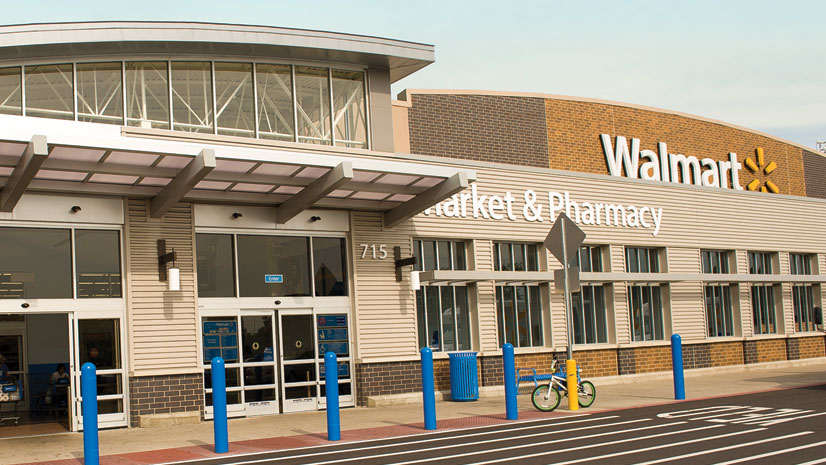
According to another observer, “Wal-Mart is more challenged in the Twin Cities than in most places because the market already has an established network of price-impact shopping options, including Target on its home turf.
“Wal-Mart’s new stores have relatively weak site-to-convenience strength — and a supercenter’s true performance doesn’t usually hit stride until the second and third year for its business, and Wal-Mart hasn’t hit that point with some of its newer stores yet.”
Local Operators
Lund Food Holdings operates 11 conventional Lunds stores and 10 upscale Byerly’s, though the two formats are actually pretty similar, one market observer told SN.
Lunds, which merged the two companies in 1997, has successfully blended the two corporate cultures, he said, “and the company has been very successful at maintaining its brand equity.
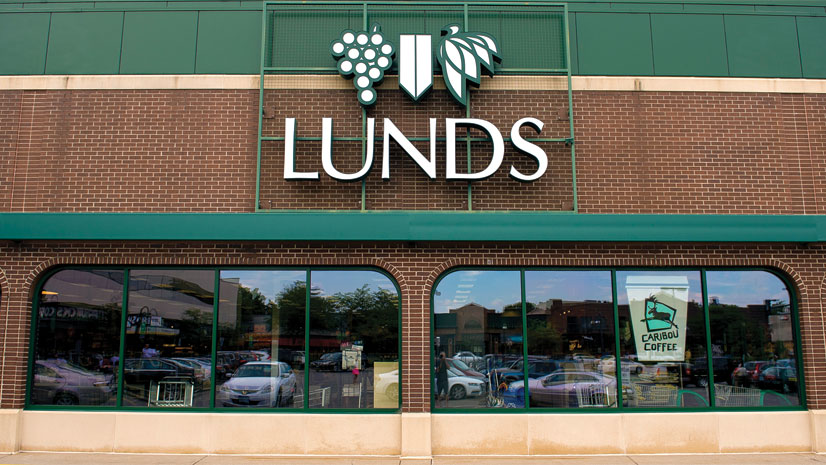
“So while neither banner is viewed as a typical grocery store, most local shoppers feel good about shopping there and believe they get a good value despite the upscale, aspirational reputation the banners have.”
Lunds-banner stores run approximately 40,000 square feet and are typically located in more urban settings, while Byerly’s stores run approximately 60,000 square feet in more suburban communities, though promotions, pricing, service levels and quality are the same at both banners, Sorenson, the Lunds spokesman, told SN.
Coborn’s, an independent, employee-owned chain, offers “a solid price-competitive operation,” one observer said. “The pricing is good, and the company does a great job providing customer service.”
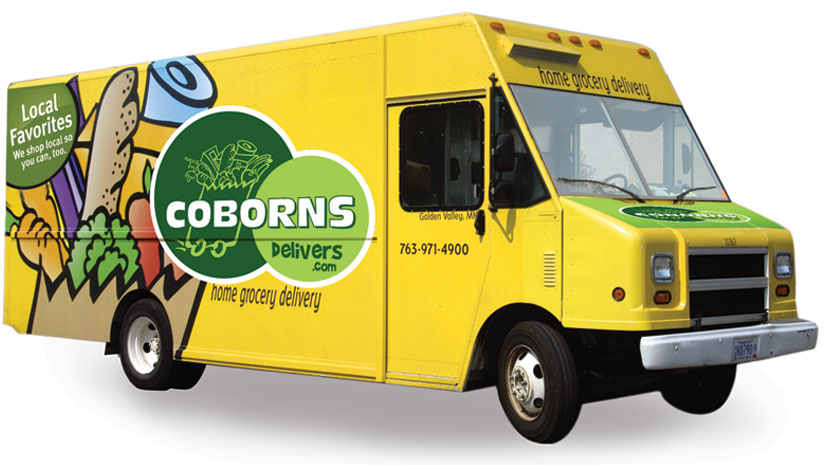
After concentrating on growth within a 30-mile radius of the Minneapolis market for the last few years, Coborn’s has acquired some stores in North Dakota and is concentrating on expanding in that area more than in Minneapolis, he added.
Jerry’s Markets, reportedly Supervalu’s largest Cub franchisee, operates all but two of its 23 locations as conventional stores under the County Markets and Cub banners; the other two stores operate under the Jerry’s banner in better neighborhoods with higher-quality offerings, local sources said.
“Jerry’s is a good, solid conventional operator,” an industry observer said. “And being so close to its source of supply, it has a lot of input into Cub’s go-to-market strategy,” he noted.
One of the area’s other major independents is Kowalski’s, a family-owned company with upscale stores and a very loyal customer base, “with strong perishables departments and more specialty offerings than most other operators,” observers said.
“Though it’s somewhat similar to Whole Foods, Kowalski’s carries some traditional brands in its grocery assortments and fewer traditional brands in other parts of the stores,” he added.
The weak economy has provided a big boost to Aldi, market watchers said.
“Once shoppers try Aldi, many decide to do more of their shopping there because they find Aldi to be an impressive retailer with an appealing offering that is much different than it was years ago,” one observer noted.
“The stores are brighter and more attractive than they were, and while selection is still limited, the items it carries are of high quality, even if many customers have never heard of the specific brands before.
“And Aldi has been adding more national brands, like Coca-Cola and Tide, and a line called Fit & Active to offer more health-oriented products.”
Sidebar: Cub, Target, Rainbow Lead Minneapolis Market Share
Consumers in Minneapolis have no shortage of shopping options.
Based on data from Metro Market Studies, the market shares there are extremely fragmented:
• Cub Foods, which leads the market with 38 corporate and franchised stores, accounts for a market-leading share of 19.6%.
• Target, which is second in the market, operates 28 stores, earning it a 13.9% share.
• Rainbow Foods, a division of Roundy’s Markets, Milwaukee, has 32 stores in the market with an 11% share, good for third place.
• Wal-Mart operates 10 supercenters there that control 8% of the market.
• Lund Food Holdings, with 11 upscale Lunds and 10 conventional Byerly’s, controls a 7.8% share.
• Costco Wholesale Corp., Issaquah, Wash., and Sam’s Clubs, Bentonville, Ark., fall right in the middle of the market, with six Costco’s at 6.9% and 10 Sam’s at 5%.
• Coborn’s, based in St. Cloud, Minn., operates 10 supermarkets and seven convenience stores on the edges of the metropolitan area, with a market share of 2.8%.
• Jerry’s Food, a local independent and one of Supervalu’s strongest customers, has 23 stores and a 2.6% share.
• Aldi operates 25 stores there with a share of 2.5%, up from 22 stores and 1.8% a year ago.
• Kowalski’s Markets, an eight-store locally based independent, has a 2.1% market share.
• Among other local operators, Knowlan’s, with nine stores, has a 1.7% share; Trader Joe’s, with five stores, controls 1.6%; and Whole Foods, with three stores, accounts for a 1.3% share.
| Suggested Categories | More from Supermarketnews |
 |
|

|
|

